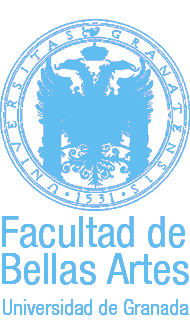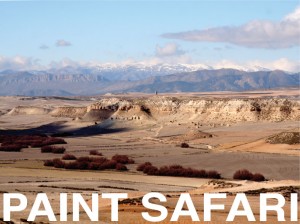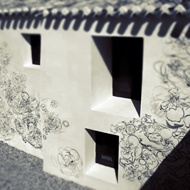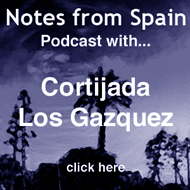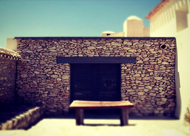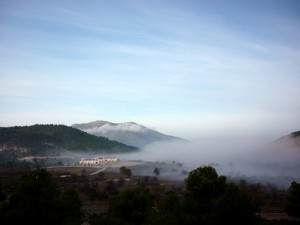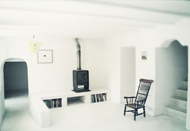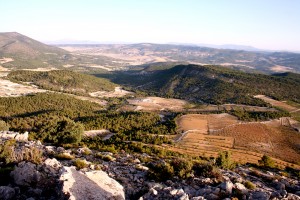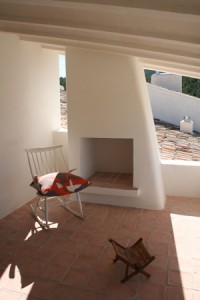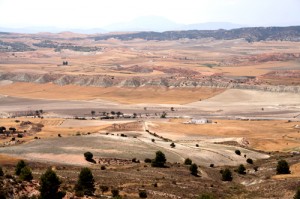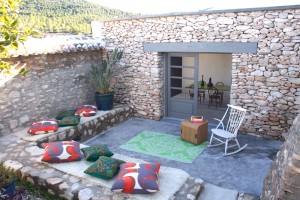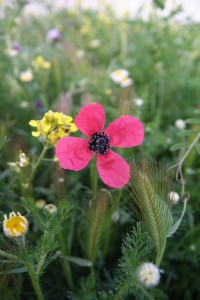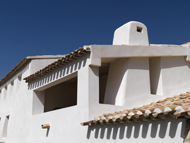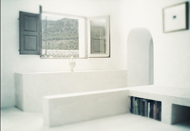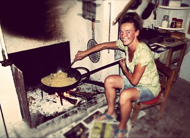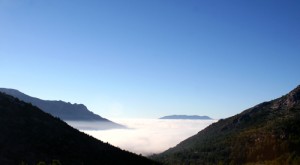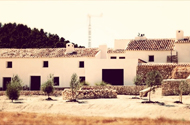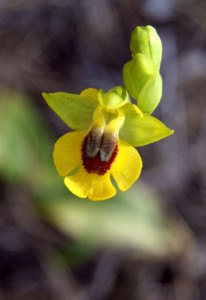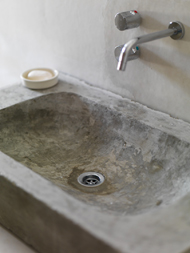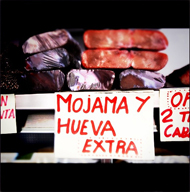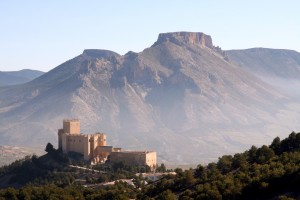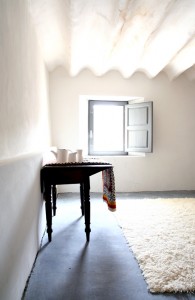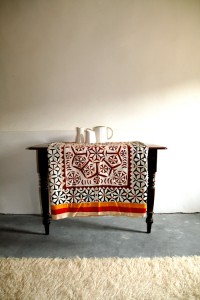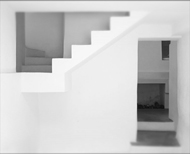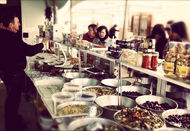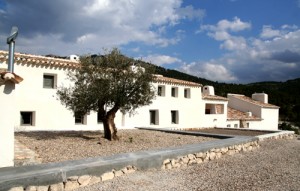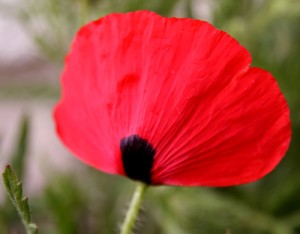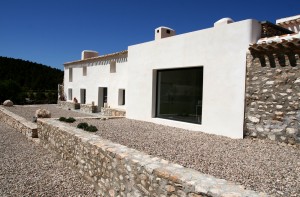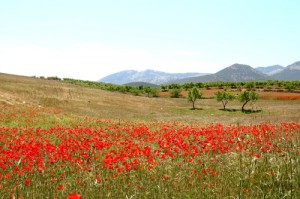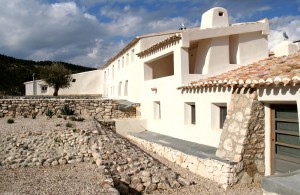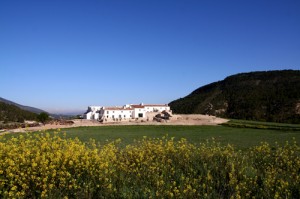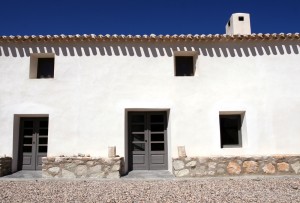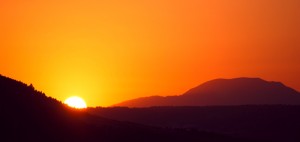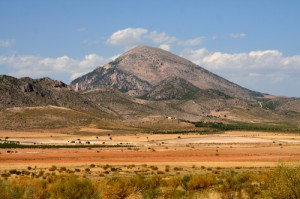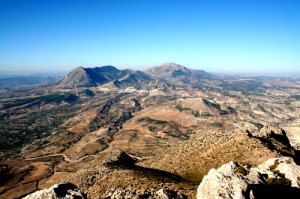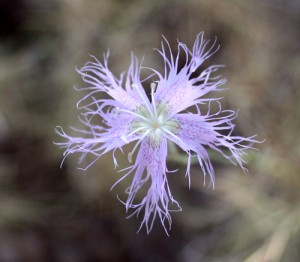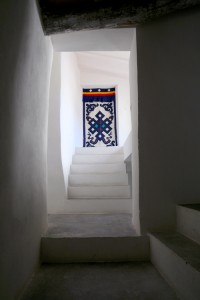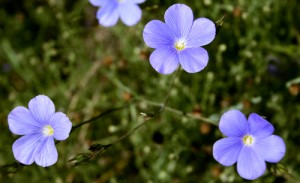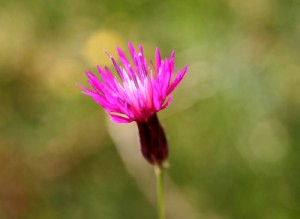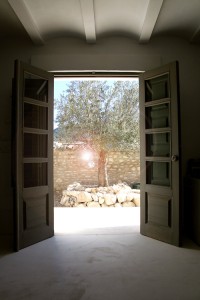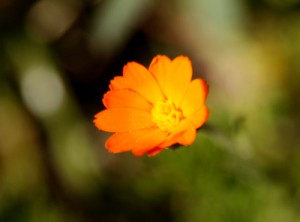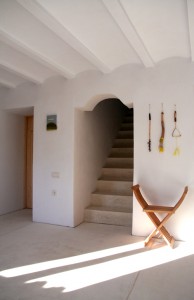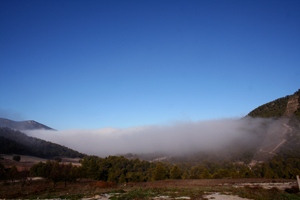January 27, 2014 at 5:23 pm
· Filed under Guest Post
Between the Gillian Ayres show at the Castlefield Gallery on Deansgate and Manchester in 1989 and the Joan Mitchell show at Hauser and Wirth around 2006, I could not choose between as seminal moments in my life. Both are profound touchstones. The Gillian Ayres show helped light the touch paper for a love affair with painting, the Joan Mitchell show poured buckets of lighter fluid on the still burning but by then more subdued flames. I am currently allowing myself to revel in this love in an unapologetic way, like I did when I was 19, and it feels good.
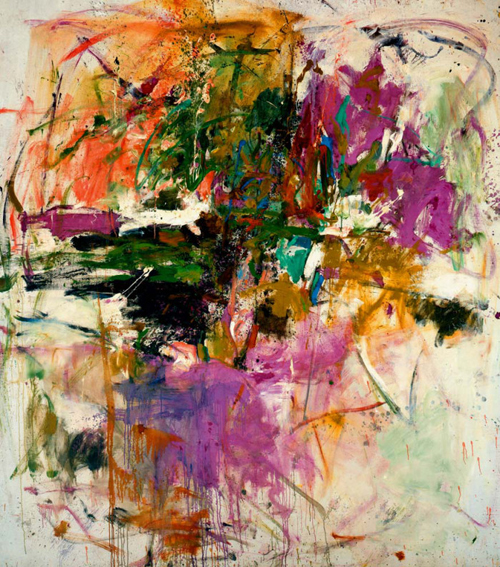
You can see the paintings of Clare Price here http://www.clareprice.com
Permalink
January 23, 2014 at 10:43 am
· Filed under Design, ecology systems, Environment
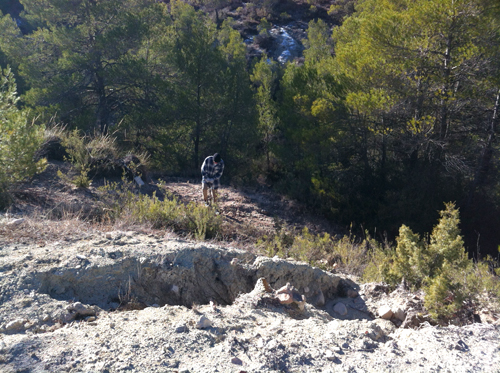
At Los Gázquez and indeed in the whole region, land suffers from erosion. There are many reasons for this and indeed this is a topic for another post. What we are currently concerned with is naturally combating this problem. So this is a trial which I will from time to time post again as an update as to it’s success or failure.
As you can see in the picture above, ’tilled’ land is fragile and can easily start washing away, even in a dry climate like ours. Once ‘fissures’ develop it only takes a small obstacle like a rock to accelerate the problem as it creates a step which amplifies the downward pressure of water on the soil causing greater erosion. One of the problems this land suffers from is the loss of native plant species which would support soils such as ‘esparto grass’…
If one observes what is happening in your location the landscape potentially reveals solutions to problems. This is esparto grass happily growing on a knoll. However the knoll is there because the root system of the grass supports the soil beneath it. The reason the grass is raised is because the soil around it has washed away. Esparto takes around 20 years to recolonise an area. So, how can we reproduce that intricate network of roots rapidly…
Here is an almond tree happily growing above the erosional fissure in question. Every year we have to prune the almonds to keep them productive and accessable. Locally these prunings are burnt however we thought we might make an experiment…
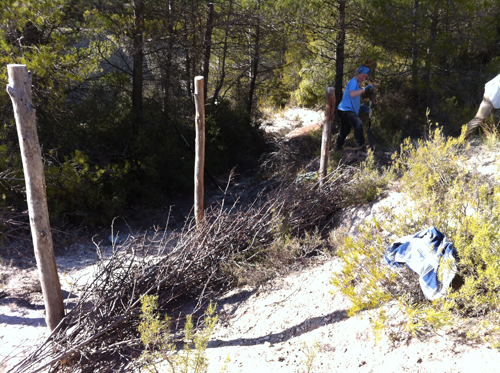
At the base of the erosional fissure we have dug in a series of posts. Behind these posts we are carefully weaving the almond prunings to create a permeable barrier…
It’s not finished yet but the idea is that the network of branches will allow water to pass through but capture soil and small stones and hold onto them the way the esparto grass roots do. In time the deposits of soil will build up and naturally re-build the bank that was previously washing away. What’s more, the almond branches will break down and release organic matter into the soil and help the rejuvenation of plant species like esparto grass etc. It’s an experiment but let’s hope it works.
Thanks must be given to our volunteers Jeroen, Franck and Fannie.
Permalink
January 21, 2014 at 5:51 pm
· Filed under Design, Environment, permaculture, Plantlife
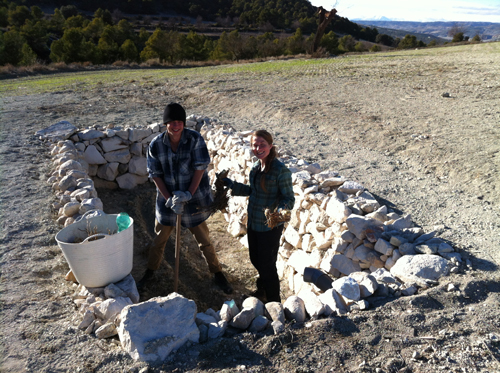
Here is French Franck (actually a Kiwi) and Canadian Fannie, two fab volunteers adding the final touches to our new grey water reed bed. That’s planting the giant cane Arundo Donax.
The weather is beautiful, warm with a cool breeze, ideal for planting…
and in they go. Finished in half an hour. I’ll let you know when they germinate.
Permalink
January 21, 2014 at 12:40 pm
· Filed under Joya
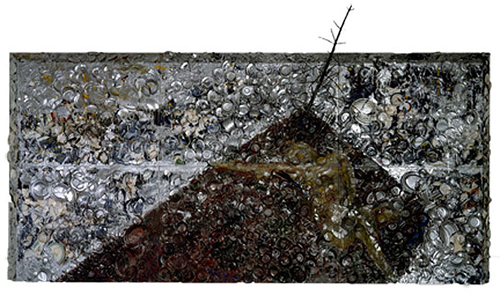
‘Julian Schnabel’s ‘ The Raft’ Oil, plates, bondo, & branch on wood - 1982…. Ive only ever seen in a book, took me on a journey when at the age of eighteen I lashed myself to its mast and drifted off into an ocean physical and mental self discovery. The plates stuck to the support with a rudimentary ‘bondo’ glue, then laquered with layers of oil reminded me of the sediment at the bottom of the sea. This raft was never going to float, yet the lightness of the painted image on such a heavy ground gave it a chance to rise above its own detritus. The heroic figure is the tortured Christ?Yes… but its also a self portrait of the artist literally at sea in a world full of broken objects and filth’.
You can see Howard Dykes work here… http://howarddyke.com and here… Saachi Gallery
Permalink
January 20, 2014 at 10:48 am
· Filed under Guest Post
‘This drawing by Louise Bourgeois from 1950 has long been a favorite of mine. In a body of work that spans the better half of the 20th century into the 21st, incorporating monumental sculpture and installation, the pursuit of “drawing” as an independent aesthetic endeavor is consistently important to Bourgeois. I know from the artist’s own commentary that this particular drawing was inspired by a childhood memory of the Creuse region in Southern France.
For me, the drawing is both landscape and body, a heaving, pulsing accumulation of strokes that suggests both a sense of expansive discovery and the immediacy of an idiosyncratic touch. There is a meditative faith in the rocking creation of form, as if the peaks and waves could only be found through the experience of making the drawing. I find all this steady, deliberate activity in the midst of the drawing’s boundless sea to be deeply reassuring.
Scale inside the drawing seems to simultaneously broaden and telescope. I am looking at something both far and close, a survey of distant mountains or some eccentric combed hairdo. Another provocative landscape/body fluctuation. Bourgeois has described her memory of the region as “deserted and frozen, ungrateful and poor.” I do get that from the drawing, but I also find the rhythmic building of form to be almost silly and celebratory in its persistence toward grand culmination that is not so grand - and the inevitable release of that form into a downhill let-down.
Hard for me to think of this drawing without making a connection to another favorite of mine: “Rocks and Trees, Montmajor” by Vincent Van Gogh - 1888. The autonomy of the mark and its wandering, almost flat-footed search for meaning is a quality which resonates in both works. Repetition as a means toward the recognition of variation and incident is another strategy in common. I have said of my own work that it is all just an excuse to get from here to there. By “all” I mean, drawing, language, the interaction of color, among other things. I like being shown how to go from here to there in these drawings, with the basic diagram of the route always available, readable but full of change and movement. I recognize the mark and I can feel it breathing’.
Permalink
January 16, 2014 at 2:10 pm
· Filed under Los Gázquez Favourites
A Los Gázquez favourite artist and favourite painting this time. Or at least one of them. Nash was a war artist serving on the Western Front in WW1. I found this quote from a letter to his wife whilst painting during the fighting at Ypres…
“I am no longer an artist interested and curious, I am a messenger who will bring back word from the men who are fighting to those who want the war to go on for ever. Feeble, inarticulate, will be my message, but it will have a bitter truth, and may it burn their lousy souls.”
This painting ‘The Battle of Britain’, is from his stint as an official war artist in the WW2 and whilst the scene is of conflict and undoubted death there is a modernist poetry and rhythm painted in the ‘contrails’ of the aircraft.
Interestingly Nash was a member of the Artists Rifles a special forces regiment of the British Territorial Army. It was formed in 1859 as a volunteer light infantry unit, the regiment saw active service during the Boer War and WW1. It did not serve outside Britain during WW2, as it was used as an officer training unit at that time. The regiment was disbanded in 1945. In 1947, it was re-established to resurrect the Special Air Services or SAS. Today, the full title of the Regiment is 21 Special Air Service Regiment (Artists) (Reserve). As a student I remember the memorial plaque to the Artists Rifles outside the Royal Academy. I’m not sure we would have been that brave.
Permalink
January 15, 2014 at 10:35 am
· Filed under Los Gázquez Favourites
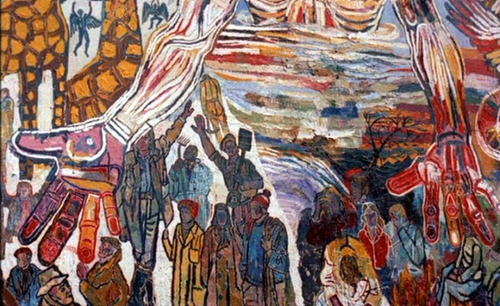
There are many reasons to like an artist or an artist’s particular work and here is an example. I knew I was going to be an artist. I liked, as a young boy, the idea of being an artist. It wasn’t just about wanting to paint. So, at some point, I don’t remember precisely but probably in the 70′s, I watched a matinee on TV called ‘The Horses Mouth’. I wanted to watch it as I recognised the title from a Joyce Carey book in my burgeoning orange Penguin collection. I also liked the director Ronald Neame from films like ‘The Third Man’. This film was made in the late 50′s and starred Alec Guinness as an artist called Gulley Jimson. It’s totally cliched and a bit of a satirical comedy romp and I never quite got Alec Guinness’s exaggerated voice. Gulley is looking for the ‘perfect wall’ to paint…. (you can guess or look here). But what did get me were the paintings. To my aspirations to be an artist, but with little direction, they were awesome. Anyway, a few years later I tracked down the artist who made them and it was John Bratby. Bratby was a founder of the ‘Kitchen Sink’ movement of artists (like yesterday’s post, an artist from the age of austerity after the war) famed for their depiction of dreary domestic scenes. He fell out of favour when Pop Art came along which is a shame as I think the whole period fascinating. Little art which preceded this movement depicted so piercingly the banality of life and therefore the democratisation of common culture.
Permalink
January 14, 2014 at 2:18 pm
· Filed under Los Gázquez Favourites
Los Gázquez favourite artist William Scott was born in Scotland of Scottish and Irish parents but travelled widely throughout Europe up until serving in the second world war. Like yours truly he won a scholarship to study at the Royal Academy Schools in Piccadilly. For many years he was a senior painting tutor at the Bath Royal Academy. In 1953 he went to the USA and met the likes of Jackson Pollock and Mark Rothko and for a while became an abstract expressionist painter. However, after a while he reverted to his still life and European tradition of painting. The painting I’ve posted here, Still Life with Orange, is in fact an abstracted still life. We know this as the skillet or frying pan is a common theme running throughout all of his painting. We like this work in particular for it’s form and colour. I also get to use unpopular words like ‘juxtaposition’ to describe the balance of forms against each other. More importantly it represents a period in British art which I forever hope will become more popular again, the age of austerity after the war and the post war transition to affluence through, in part, great design.
Permalink
January 13, 2014 at 10:32 am
· Filed under Los Gázquez Favourites
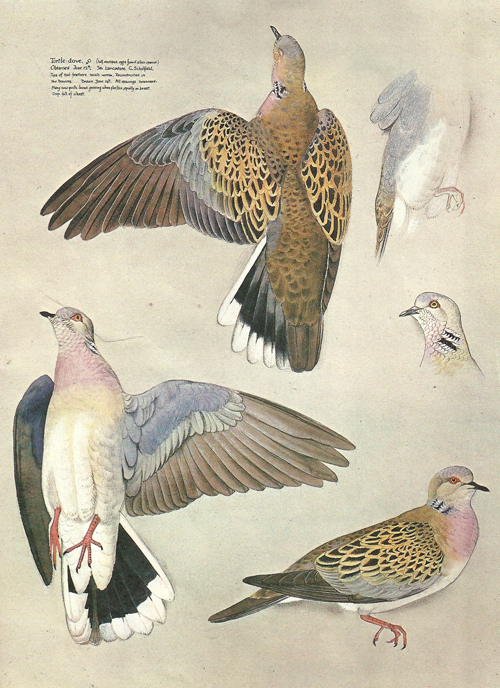
Los Gázquez favourite artist Charles Tunnicliffe, illustrator, watercolour painter, etcher, wood engraver, oil painter and ‘scraper board’ expert. (do they still make scraper board) He was born in England but spent most of his life living on the Isle of Anglesey by the estuary in Malltraeth. He predominantly illustrated wildlife, especially birds. However, if you do a Google image search you will find on the whole a more conventional illustrative form than this drawing of a Turtle Dove I have posted here. For us the paintings in this form are the extraordinary works. You would be accurate in describing them as anatomical as indeed they are but more than that they show a profound love of his subject. He paints them with a deeper intention than describing their plumage. When he turns the animal over to observe the inside of a wing, for example, he is almost paying homage to it’s life form. Even the notes he makes on the edge of the paintings allude to a greater observation of the colours he observes. So whilst he illustrated things like Henry Williamson’s ‘Tarka the Otter’ or Brooke Bond tea cards the work we like is much more incisive and truly gets to the heart of his subject without the distraction of having to conform to external aesthetic values.
Permalink
January 11, 2014 at 1:27 pm
· Filed under Los Gázquez Favourites
As we progress with this little sequence of posts I realise that I am quickly going to run out of superlatives to describe the artists we like so much. So I feel I need to clear the air before I progress. There is a word I loath unless it’s applied to an ancient temple of one creed or another and that’s ‘spiritual’! We are all entitled to express our beliefs and mine is profoundly aetheist. So let me say now, when I experience something like a great painting I am prepared to say (in the words of Richard Ford) that ‘the unseen exists and has qualities’. What those qualities are I can’t express so clearly but I’m not going to resort to the dubious and banal use of the word spiritual in this context.
So, John Sell Cotman.1782-1842 from Norwich, painter and printmaker principally of landscapes and marine scenes. We love in particular his watercolours. The technique (dry watercolour), the accuracy or precision and his palett. I would love to own one and each day marvel at his process, his medium specificity.
Permalink










